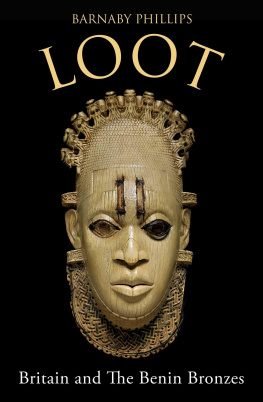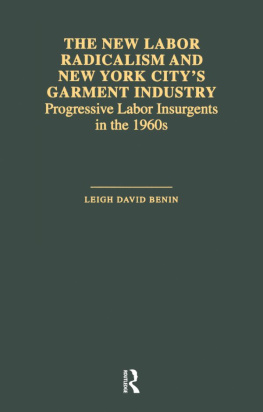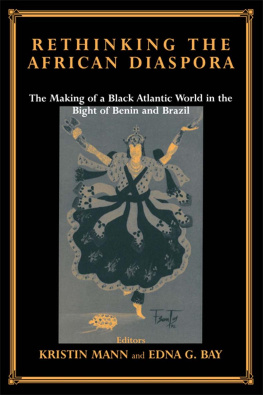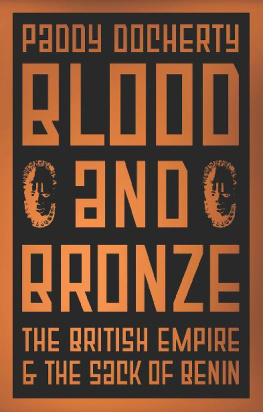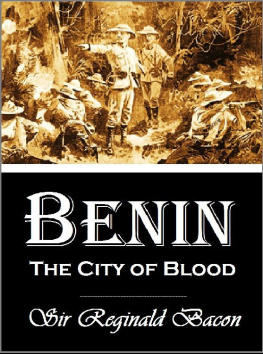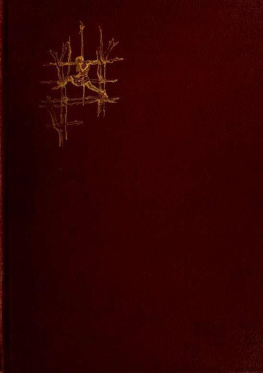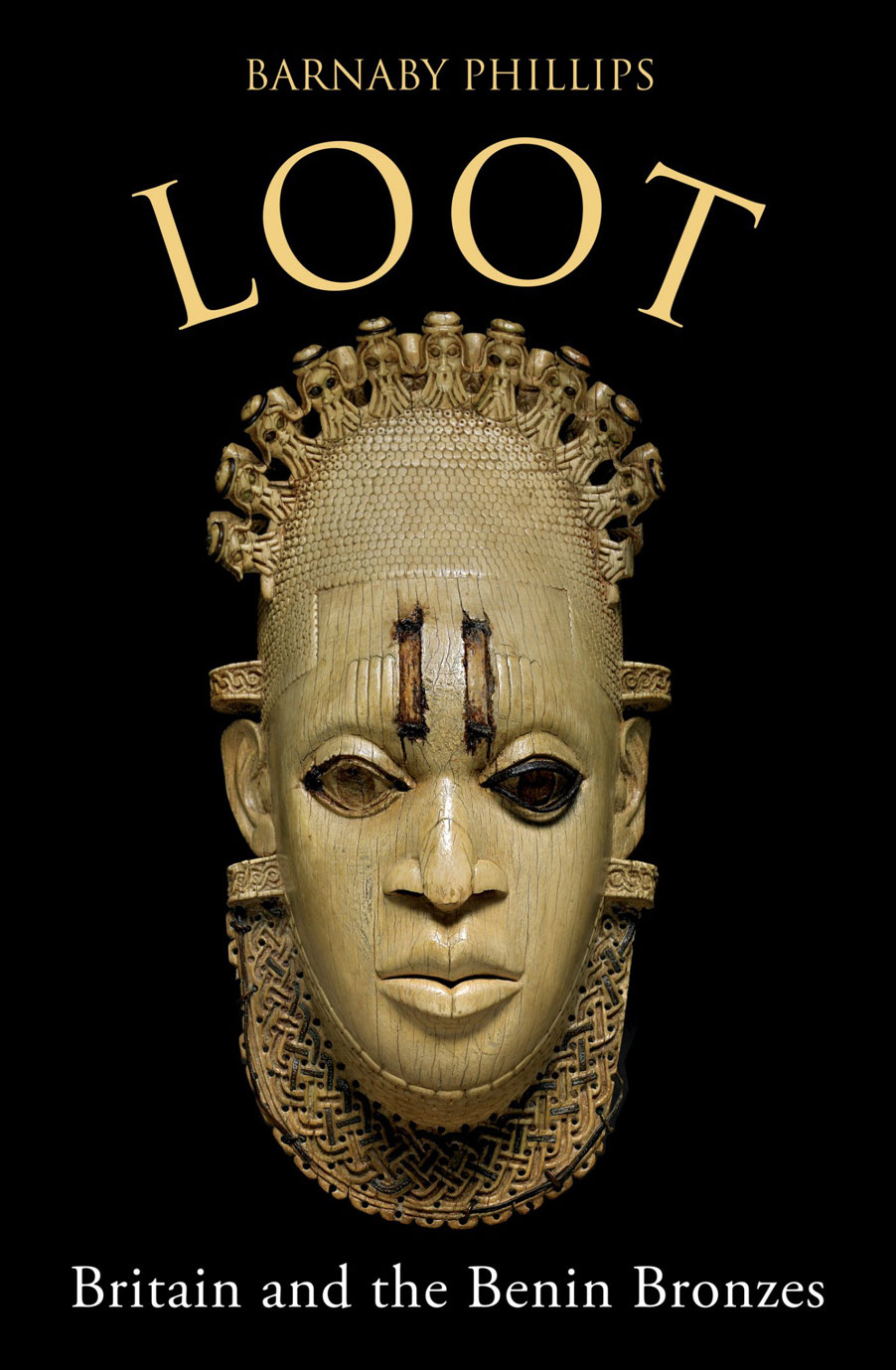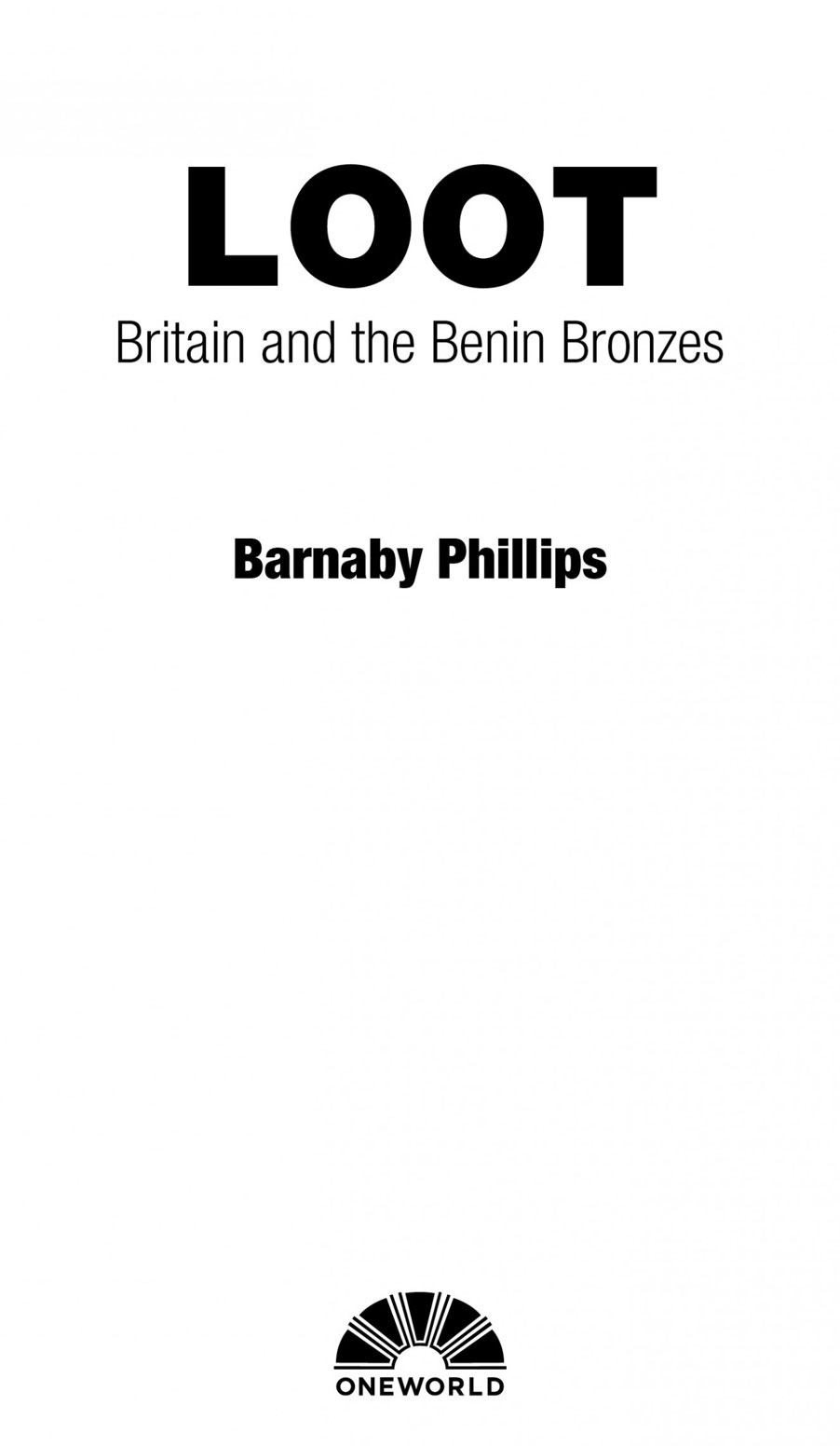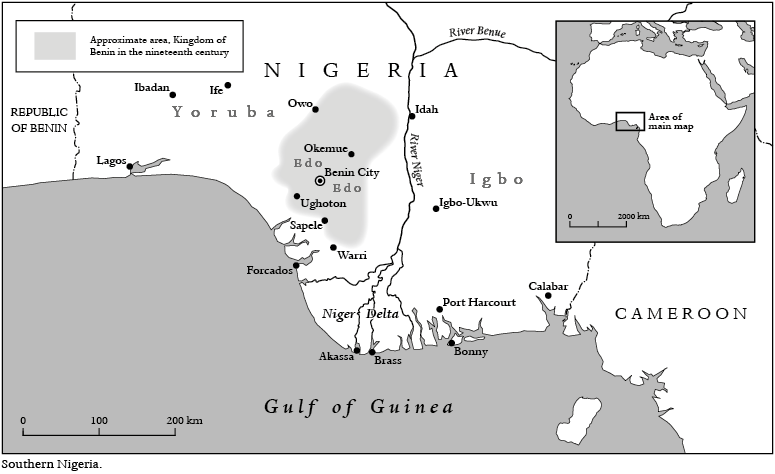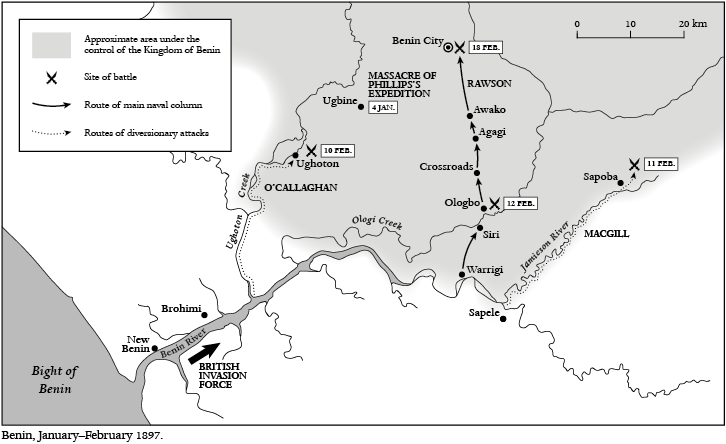ALSO BY BARNABY PHILLIPS
Another Mans War
The Story of a Burma Boy in Britains Forgotten African Army
To Emmeline and Mariella
Contents
Preface: Relatives behind bars
Clarifications
1) The historic West African Kingdom of Benin is located in modern-day Nigeria, a former British colony. Benin City was, and is, at the heart of this kingdom. In 1975, Dahomey, a former French colony to the west of Nigeria, changed its name to Benin, in part because its coast lies on the Bight of Benin, and also because its government wanted a name that was ethnically neutral but evocative of past African glories. The territories of this Republic of Benin were only on the periphery of the historic Kingdom of Benin, and this country has no connection to the Benin Bronzes. Any references in this book to Benin are to the kingdom that is now in Nigeria, and not to the Francophone country next door, unless specifically mentioned as the Republic of Benin.
2) The cast metal sculptures of the Kingdom of Benin are referred to collectively as the Benin Bronzes, although most are made of brass and only a small proportion are bronze. The term Benin Bronze is often used to include all the kingdoms treasures, including ivory carvings, such as the wonderful mask on the cover of this book.
Timeline
c.900c.1170 Ogiso dynasty rules Benin
c.1200 Beginning of Oba dynasty, Eweka I
c.1280 Oba Oguola. One tradition says bronze and brass casting in Benin begins during his reign
c.1440 Ewuare the Great expands Benins empire and builds inner city walls and moat
1486 First recorded European contact: Portuguese sailor Joo Afonso de Aveiro arrives in Benin City and is received by Oba Ozolua the Conqueror
c.1504 Oba Esigie ascends throne. Benin is in a golden age of cultural and military power
1515 First Portuguese priests arrive in Benin
12 August 1553 An English fleet, under Thomas Wyndham, sails from Portsmouth for Benin
1593 Dutch ships arrive off Guinea coast
1719 Capuchin mission returns to Europe, marking unsuccessful end of pre-colonial attempts to convert the Edo to Christianity
1807 Britain abolishes slave trade in its empire
1837 Royal Navy seizes last Portuguese slaving ship in Benin River
1861 Lagos annexed as a British colony
1884 Britain establishes Oil Rivers Protectorate
18845 Berlin Conference. European powers agree the Niger Districts fall within Britains sphere of influence
March 1892 Vice-Consul Henry Gallwey visits Benin. Oba Ovonramwen signs treaty of British protection
1893 Oil Rivers Protectorate becomes Niger Coast Protectorate. British presence expands
February 1896 Ralph Moor appointed Consul-General of Niger Coast Protectorate
3 January 1897 Deputy Consul-General James Phillips and party arrive at Ughoton en route to Benin City, and ignore Ovonramwens pleas to delay their visit
4 January 1897 Phillipss Expedition massacred at Ugbine
9 February 1897 British Punitive Expedition, under command of Admiral Harry Rawson, disembarks from Royal Navy ships and begins journey into Niger Delta
18 February 1897 Rawson takes Benin City. Ovonramwen flees. British find, and loot, the Benin Bronzes
21 February 1897 Fire sweeps through Benin City
May 1897 First auction of Benin Bronzes in London
June 1897 Celebrations of Queen Victorias Diamond Jubilee
5 August 1897 Ovonramwen surrenders
15 September 1897 Ovonramwen sent into exile in Calabar
September 1897January 1898 First Exhibition of Benin Bronzes in British Museum
28 June 1899 Chief Ologbosere executed by British after a brief trial, marking end of organised Edo resistance
1900 British create Protectorate of Southern Nigeria
13 September 1909 Sir Ralph Moor commits suicide in London, after which his widow hurriedly sells his two Queen Idia masks to a dealer in Chinese art
1 January 1914 Protectorates of Southern and Northern Nigeria merged to form Nigeria
14 January 1914 Ovonramwen dies in Calabar
July 1914 Ovonramwens son Aiguobasimwin installed as Oba Eweka II, marking end of interregnum and restoration of Oba dynasty
February 1933 Eweka II dies and in April his son installed as Oba Akenzua II
1933 Chief Jacob Egharevba publishes Ekhere VbItan Edo in Edo. In 1936 it comes out in English as Short History of Benin
December 1953 Benin Bronze head sold at Sothebys in London for 5,500
March 1957 Nigerias National Museum opens in Lagos
1 October 1960 Nigerian independence
December 1968 Benin Bronze head sold at Christies in London for 21,000
22 April 1972 Kenneth Murray, founder of Nigerias museums, killed in car crash en route to Benin City
July 1974 Ingersoll Flute Man aka Toochly-Poochly sold at Sothebys in London for 185,000
JanuaryFebruary 1977 Nigeria hosts FESTAC, Black and African Festival of Arts and Culture. British Museum refuses to lend its Queen Idia ivory mask
1978 Akenzua II succeeded by Oba Erediauwa
July 1989 Benin Bronze head sold at Christies in London for 1,320,000
1997 Benin City commemorates centenary of British invasion
2007 Formation of Benin Dialogue Group, bringing together the Oba, Nigerian government and key European museums, including British Museum
May 2007 Benin Bronze head sold at Sothebys in New York for $4,744,000
20 June 2014 Mark Walker returns two Benin Bronzes to Oba Erediauwa
2016 Benin Bronze Ohly Head sold for 10,000,000
October 2016 Erediauwa succeeded by Oba Ewuare II
March 2017 Prince Gregory Akenzua (uncle of the Oba) informs Benin Dialogue Group of plan to establish a Benin Royal Museum
28 November 2017 President Emmanuel Macron of France, in Burkina Faso, says European museums cannot hold on to Africas cultural heritage
November 2018 Sarr-Savoy Report, commissioned by President Macron, says France should return objects taken by force or presumed to be acquired through inequitable conditions
July 2019 Edo State Governor Godwin Obaseki announces agreement with architect Sir David Adjaye to build Benin Royal Museum
August 2020 British Museum reopens after Covid-19 lockdown. New information panels by Benin Bronzes are entitled Benin: colonial conquest and military looting
List of Illustrations
Front cover: Ivory mask of Queen Idia, early sixteenth century. In Nigeria it is a symbol of colonial injustice but also post-colonial pride. ( The Trustees of the British Museum)
)
Preface
Relatives behind bars
Walk across the British Museums Great Court, through throngs of people and a babel of languages, down a stone staircase, and you will come to the darker and quieter gallery where Africas treasures are kept. At one end of the gallery, a display of fifty-six brass plaques seems to float in front of a wall. The plaques are held in place by slim poles that run vertically behind. The intention is to suggest how they once decorated the pillars of a West African palace. They are cast in bas-relief, meaning they are three-dimensional, and on a relatively small space about the size of an A3 sheet of paper each one captures an abundance of exquisite detail: kings and courtiers, early European explorers, hunters and musicians, leopards and fish, rosettes and swords. The figures face outwards, on ceremonial display, their large heads slightly disproportionate to their bodies. The plaques are some 500 years old, and depict the stories and beliefs of a civilisation that traces its origins at least another 500 years further back in time. They come from Benin, in modern-day Nigeria. They were looted from the palace of the King of Benin, the Oba, in 1897, by British soldiers and sailors, who also took thousands of other objects, including statues, commemorative heads and ivory carvings.

